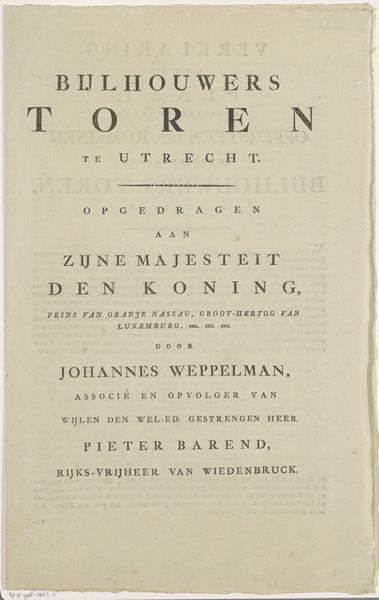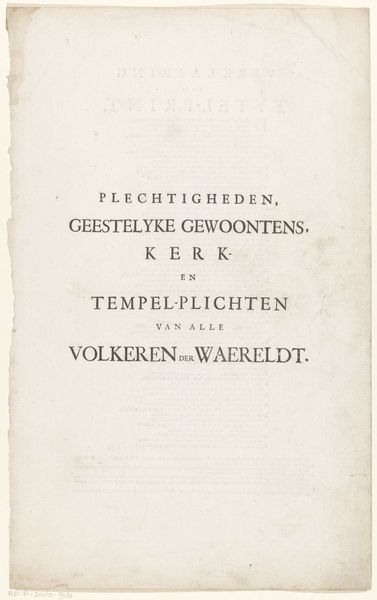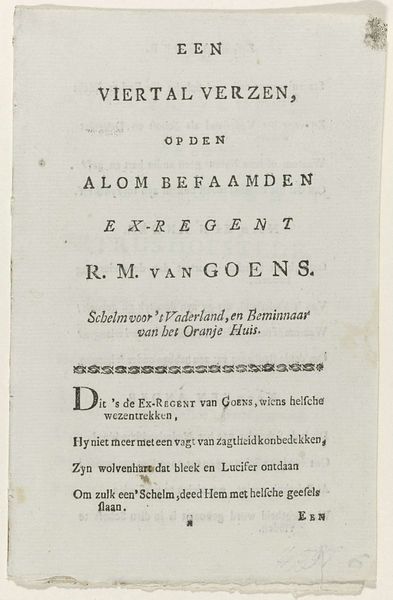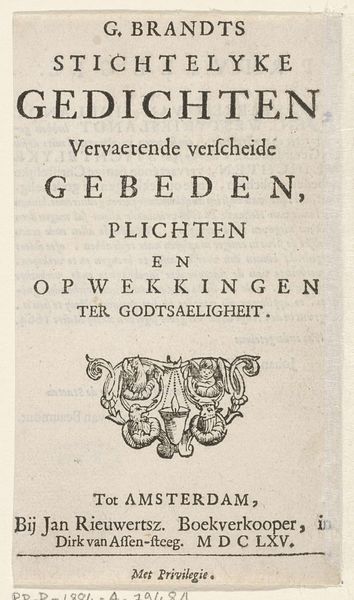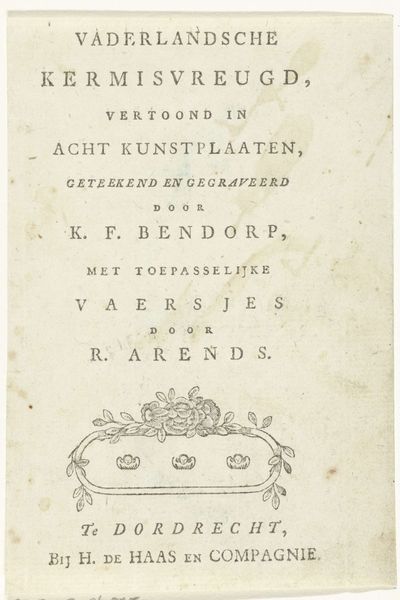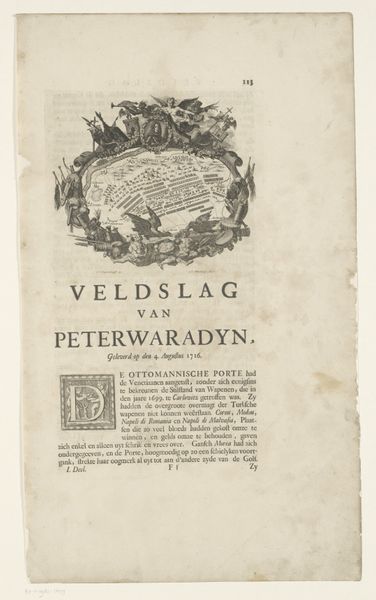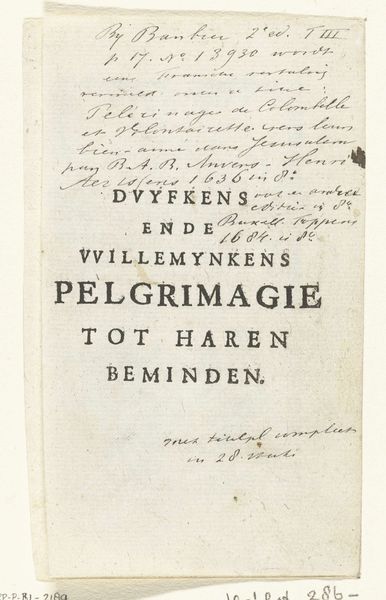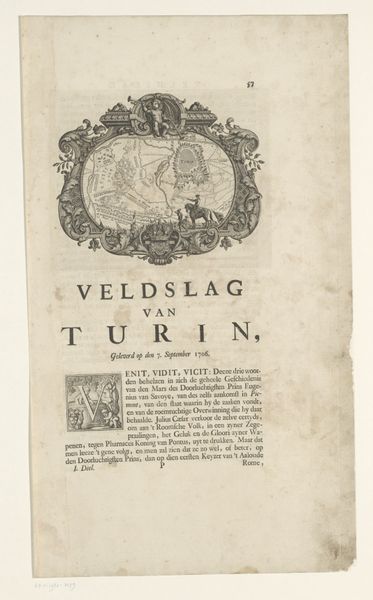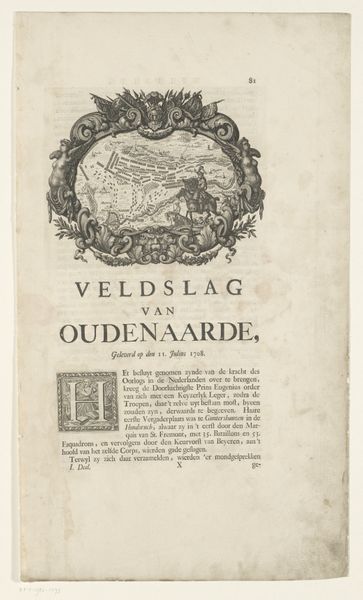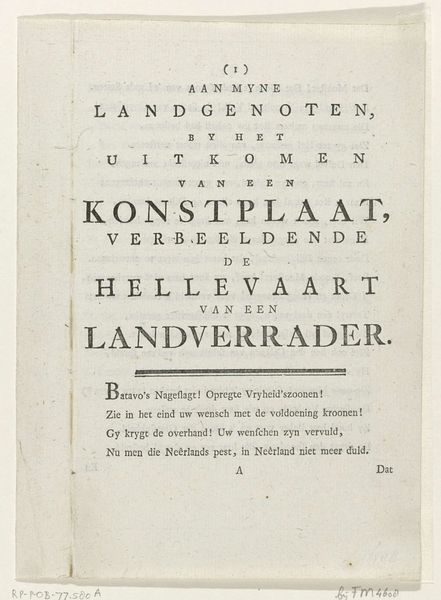
Verklaring van de plaat met de St. Servaastoren en bijgelegen gebouwen in Utrecht 1789 - 1843
0:00
0:00
print, typography, engraving
# print
#
typography
#
cityscape
#
engraving
Dimensions: height 435 mm, width 275 mm, height 435 mm, width 550 mm
Copyright: Rijks Museum: Open Domain
Editor: So, we have here, “Verklaring van de plaat met de St. Servaastoren en bijgelegen gebouwen in Utrecht,” a print using typography and engraving techniques by A. Judels. It’s from between 1789 and 1843. The work features large lettering in what feels like an informational poster or notice. What’s your perspective on it? Curator: This piece, seemingly simple, speaks volumes about the social and economic forces at play in printmaking during that era. Consider the labor involved: engraving, typesetting, printing… all skilled trades, likely employing a workshop. The emphasis isn't on aesthetic flair, but on conveying information, pointing towards a growing demand for accessible knowledge and the rise of a more literate public. Editor: Interesting, I hadn’t considered that aspect. Curator: Ask yourself, what was the purpose of this print? It's not just about the St. Servaas tower. The 'typography' isn’t simply the application of text; it’s about distribution and reaching a wide audience. The engraver, A. Judels, probably fulfilled commissions rather than creating “art” in the modern sense. Think about the market that sustained his labor. Editor: So, its artistic merit lies in understanding its function within the social and economic system of the time? Curator: Precisely! And that’s where its power resides for me: by studying it we learn about consumption, craftsmanship, the work behind this form of distribution, and perhaps the emerging visual vernacular of early mass media. Consider the cost of the materials at the time. Were these sheets distributed free, sold or posted in public locations? Each answer takes us back to how production and value intertwined. Editor: That gives me a completely new way to appreciate what would otherwise be an unassuming print. It’s more than meets the eye, right? Curator: Exactly! This has shown, to me, how revealing an everyday print can be for seeing its society’s production, labour and capital. Editor: I now understand the importance of analysing material production in art.
Comments
No comments
Be the first to comment and join the conversation on the ultimate creative platform.
